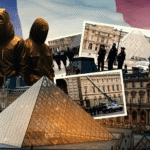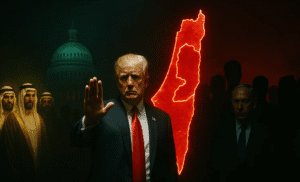On October 18, 2025, millions of Americans filled the streets across all 50 states under the banner of the “No Kings” protests, one of the largest coordinated demonstrations in U.S. history. Organizers estimated more than 7 million participants gathered at roughly 2,700 locations, from major cities like New York, Chicago, and Los Angeles to smaller towns and rural communities. The movement’s unifying slogan, “No Kings,” echoed through city squares, parks, and avenues, symbolizing widespread concern over what participants described as the growing threat of authoritarianism under President Donald Trump’s administration.
The protests emerged as a collective response to what demonstrators and civic groups characterized as a dangerous centralization of power within the executive branch. Organizers and attendees cited the President’s use of federal agents in domestic law enforcement, mass immigration raids, and public attacks on the judiciary and press as core grievances. Many said the government’s recent actions blurred the line between democracy and autocracy. “In America, we have no kings; the power belongs to the people,” declared one organizer during a rally in Washington, D.C. The phrase quickly spread across social media and protest placards, becoming the movement’s rallying cry.
While the protests were politically charged, they maintained a largely peaceful and festive tone. In Chicago, more than 100,000 people gathered in Grant Park, waving banners and listening to speeches from community leaders, veterans, and students. Houston saw between 13,000 and 15,000 demonstrators, many of whom highlighted immigrant and LGBTQ+ rights as key concerns. Coastal states like California hosted dozens of simultaneous marches, while inland states such as Kansas, Montana, and Nebraska witnessed some of the largest civic gatherings in recent memory. Even in smaller towns, residents joined hands, forming human chains and candlelight vigils to mark the day.
The visual language of the protests was striking. Demonstrators carried hand-painted signs with messages like “We The People, Not The Throne” and “Liberty Over Loyalty.” Many wore paper crowns with slashes through them or dressed as colonial-era patriots, emphasizing the historical theme of rejecting monarchy. Musicians and street artists turned the marches into part-protest, part-celebration, with drumming circles, chants, and flash mobs energizing crowds. The overall atmosphere blended urgency with optimism, a civic festival dedicated to democracy itself.
The government’s reaction was divided. President Trump dismissed the demonstrations as the work of “radical left agitators,” suggesting they were unrepresentative of the “real America.” He later posted a controversial AI-generated video portraying himself “defeating” the protesters, a move that drew bipartisan criticism. Meanwhile, governors in several Republican-led states activated National Guard units or increased police presence to monitor the gatherings, though only minor scuffles were reported. In contrast, many Democratic officials praised the protests as a necessary act of civic resistance. Civil-rights groups called the day a triumph of peaceful dissent, emphasizing that democracy “depends on the courage to speak out.”
The geographic scope of the movement made it a remarkable display of unity. From New York City’s Union Square to Los Angeles’ Pershing Square, and from Atlanta to Anchorage, Americans of varied political backgrounds participated. The protests even inspired solidarity rallies overseas, with gatherings in London, Paris, and Toronto, where expatriates and sympathizers echoed the “No Kings” message. Analysts noted that the October 2025 demonstrations built on an earlier wave of “No Kings” protests in June, showing that the movement had grown rather than faded.
Organizers insist the October protests are not the end but a beginning of sustained civic engagement. Plans are already underway for community-level organizing, voter-registration campaigns, and town-hall meetings aimed at reinforcing democratic participation. The coalition behind the events, a mix of civil-rights organizations, labor unions, veterans’ groups, and student networks, has pledged to maintain momentum through the 2026 midterms. Experts say the “No Kings” movement could become a defining civic moment of the decade, illustrating how Americans, amid political division, can still unite under a shared belief in constitutional democracy.
Ultimately, the “No Kings” protests were more than a rejection of a single leader; they were an affirmation of a principle that in the United States, power rests not with a ruler, but with the ruled. As millions chanted, sang, and marched beneath the autumn sky, the message was unmistakable that America has no kings, only citizens.

















